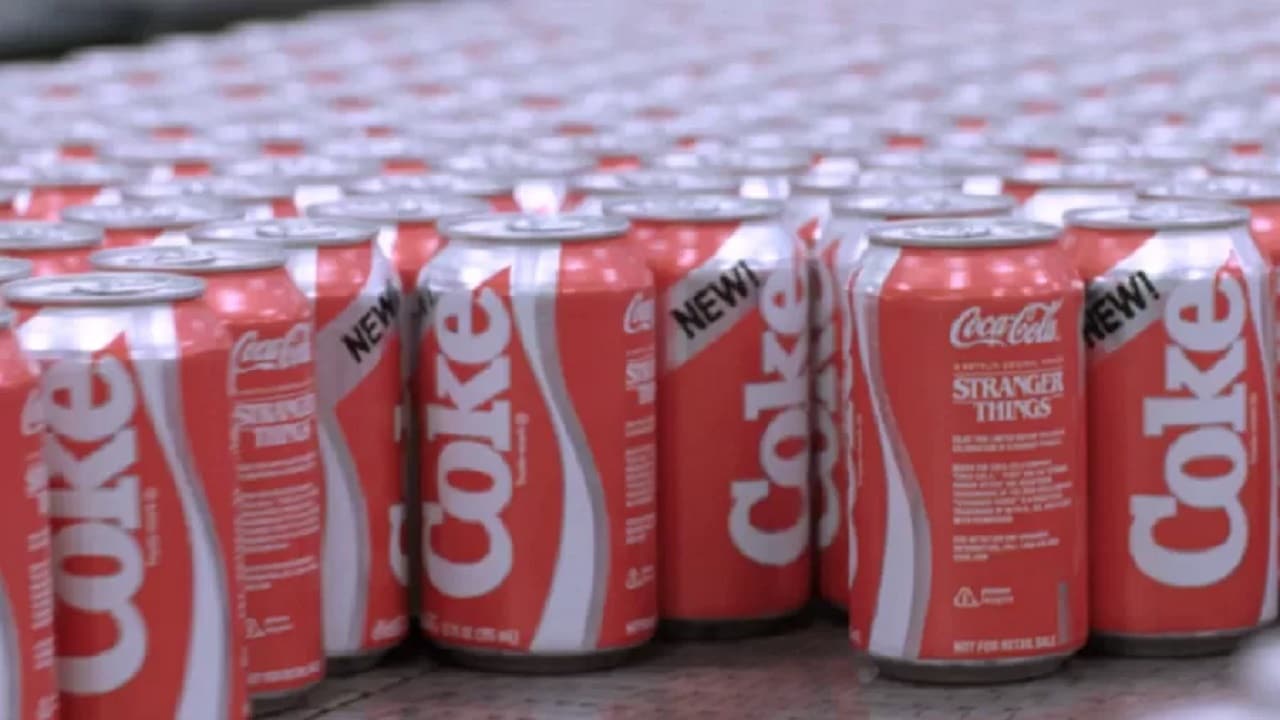Anúncios
In the dynamic world of technology, the trajectory of innovation can be unpredictable. The anticipation of a breakthrough can often be met with applause, only to fizzle out into obscurity. This piece delves into a captivating exploration of technological innovations that promised to revolutionize, but instead, ended up in the annals of tech history as monumental flops. From ambitious start-ups to established tech giants, no one is immune to failure when venturing into the unknown.
Journey through a chronicle of promising products and services, once heralded as the ‘next big thing,’ that didn’t quite make the cut. The narrative highlights how the likes of Google Glass, Segway, and other ‘game-changers’ failed to find traction and fell by the wayside. It’s a fascinating insight into the realities of technological innovation, often punctuated with unforeseen challenges, miscalculations, and simple market indifference.
Anúncios
In the spirit of learning from the past, this exploration serves not only as a historical overview but also as a study into the reasons behind these failures. The analysis goes beyond the product and delves into strategies, market readiness, competition, and a multitude of other factors that led to their untimely downfall. From high-profile launches to quiet withdrawals, these stories serve as poignant reminders of the precarious path of technological advancement.
So, ready for a trip down memory lane? Buckle up for an intriguing journey through a landscape littered with the remnants of technological flops. It’s not just a tale of failure, but also a testament to the relentless pursuit of innovation, even when the road is paved with setbacks. 🚀💥🔍
Anúncios
The New Coke: A Classic Marketing Blunder
One of the most iconic product missteps in corporate history is the launch of “New Coke” by the Coca-Cola Company in 1985. Positioned as a bold innovation, the revamped formula was introduced in an effort to recapture market dominance from Pepsi, which had been gaining popularity, especially among younger consumers. Coca-Cola’s decision was backed by extensive market research and taste tests that seemed to confirm that the new formula was preferred over both Pepsi and the original Coke. However, the real-world outcome proved drastically different.
Despite the company’s confidence, the public’s reaction to New Coke was overwhelmingly negative. Consumers didn’t just dislike the taste—they felt betrayed. Coca-Cola wasn’t just a beverage; it was a cultural icon, a symbol of tradition and American identity. By altering its core formula, the company underestimated the deep emotional and nostalgic bond customers had formed with the original product. The backlash was swift and intense, with thousands of phone calls and letters flooding Coca-Cola’s headquarters. Protest groups formed, and media coverage intensified the narrative of corporate overreach and insensitivity.

So, why exactly did New Coke fail?
First and foremost, Coca-Cola misjudged the power of brand loyalty. The company had built a legacy on its classic formula, one that consumers had come to associate with comfort, heritage, and national pride. By removing the original product from shelves entirely, Coca-Cola didn’t just introduce a new flavor—it erased a beloved part of many people’s lives. Customers weren’t given a choice, which amplified the sense of loss and fueled the public outcry.
Second, the company relied too heavily on controlled taste tests, which didn’t reflect typical consumption patterns. Participants sampled small amounts, making sweeter flavors (like New Coke) more favorable in short sips. But drinking an entire can or bottle is a different experience. Many consumers found the new formula too sweet or artificial over time, unlike the familiar balance of the original.
The debacle ultimately led Coca-Cola to reintroduce the original formula just 79 days later under the name “Coca-Cola Classic.” Ironically, the controversy worked in the company’s favor in the long run. The return of the classic formula sparked a wave of renewed affection for the brand, boosting sales and strengthening its market position. Still, the New Coke saga remains a powerful lesson in the importance of consumer perception, emotional connection, and market sensitivity in product innovation.
Microsoft’s Zune: Outplayed by Apple
Microsoft’s Zune was a portable media player that was launched in 2006 to compete with Apple’s iPod. Despite its advanced features like a larger screen, FM radio and a unique sharing feature, the Zune couldn’t quite match up to the iPod’s popularity.

Where did Zune go wrong?
Zune’s failure can largely be attributed to its late entry into the market, by which time iPod had already established a massive user base. In addition, Zune was initially only compatible with Windows, excluding a significant portion of potential users. Lastly, while the Zune was technically superior in some respects, it didn’t offer a significantly different or better experience than the iPod, giving users little reason to switch.
Google Glass: A Vision Too Soon
When Google Glass was launched in 2013, it was touted as the future of wearable technology. However, it was met with significant backlash due to privacy concerns and was discontinued in 2015.
The Downfall of Google Glass
The failure of Google Glass can be attributed to several factors. The high price tag of $1500 made it inaccessible to the average consumer. Moreover, the glasses were seen as intrusive and raised concerns about privacy and security. Lastly, there were no compelling use-cases or applications that justified the price and potential privacy trade-offs.
Segway: The Revolution That Wasn’t
The Segway, introduced with great fanfare in 2001, was hailed as a technological marvel that would change the way people moved through cities. Promoted as an eco-friendly alternative to cars for short-distance travel, it captured public imagination and media attention. However, despite the buzz, the Segway never achieved the mass adoption its creators anticipated.

A significant barrier was its steep price point, which made it inaccessible to the average consumer. Priced around $5,000, it was far more expensive than a bicycle and less practical than a scooter or car for most daily commutes. Additionally, the Segway struggled with a lack of clear purpose—neither fully replacing walking nor offering the speed and convenience of other transport modes.
Compounding the issue were city regulations that limited where Segways could be used, particularly on sidewalks. With limited legal pathways and unclear utility, the Segway became more of a novelty than a necessity, leading to its quiet exit in 2020.
Conclusion
While these tech innovations may have failed, they provide valuable lessons in understanding consumer needs, market timing, and the importance of a compelling value proposition. Future innovators can learn from these missteps and improve their chances of success.
In conclusion, the technological journey from flops to fails underscores the inherent risks and challenges tied to innovation. While the aspirations behind these tech products were high, the reality was often starkly different, leading to their eventual downfall. Various factors contributed to their failure, including poor market research, overcomplication, and lack of consumer interest. However, it’s important to remember that these failures can often serve as stepping stones toward better, more refined tech innovations.
Many of the failed products discussed had incredible potential, but what they lacked was alignment with the broader ecosystem and a solid understanding of how users would interact with them in real-world scenarios. Whether it was Google Glass introducing wearable tech too early or the Segway being a solution in search of a problem, the core issue often revolved around misjudging the readiness of the market or the context in which these innovations would be used. These cases show us that success in the tech industry is not solely defined by engineering brilliance or visionary design—it also hinges on empathy for the end-user and an intuitive grasp of market dynamics.
It’s also worth acknowledging the courage and ambition behind these innovations. To bring a bold idea to life, pitch it to investors, rally a team behind it, and launch it into the world takes vision, risk tolerance, and relentless effort. The creators of these failed technologies dared to challenge the norm, aiming to redefine how we live, work, and interact with the world. While they may not have hit the mark, their efforts contributed to the ever-evolving story of technological progress. In many cases, their ideas were simply ahead of their time.
Take Google Glass, for instance—although it failed as a consumer product, the concept of augmented reality has continued to evolve, now finding success in enterprise settings and laying the groundwork for current AR/VR innovations. Similarly, Microsoft’s Zune didn’t dethrone the iPod, but elements of its design and ecosystem later appeared in the development of Windows Phone and even some features in today’s Microsoft services. Even when innovations flop, they often leave behind digital footprints that influence future success stories.
In this way, every failure can be seen as a building block. It’s easy to celebrate successful products, but perhaps more important is learning from the ones that didn’t quite make it. Postmortems of failed technologies offer a treasure trove of insights into human behavior, market psychology, and strategic decision-making. They encourage developers, designers, and entrepreneurs to ask deeper questions: Who are we building this for? What problem does it solve? Will it integrate into existing habits, or demand new ones?
Furthermore, these stories highlight the importance of adaptability. The companies that tend to survive failed ventures are those that learn quickly, iterate, and pivot. Coca-Cola recovered from the New Coke debacle not by doubling down, but by listening to customers and bringing back the original formula. That decision not only salvaged their brand reputation but arguably strengthened consumer loyalty in the long term. The takeaway here is clear: failure isn’t the end of the road—it can be the turning point that drives a brand closer to its audience.
It’s also important to examine the role of timing. Many products failed not because they were inherently bad, but because they were launched at the wrong time. Consumer behavior, infrastructure, societal norms, and even global events play crucial roles in shaping a product’s destiny. If the Segway had launched in an age where micro-mobility solutions and smart cities were more prevalent, it might have found a firmer footing. If Zune had arrived before the iPod, history might have remembered it differently.
Moreover, these tech failures underline a deeper point about innovation: not every idea needs to be a home run. In the pursuit of technological breakthroughs, failure is an inevitable—and essential—part of the process. In fact, the tech industry thrives on trial and error. For every iPhone or Tesla that changes the world, there are countless prototypes, experiments, and flops that cleared the path. Each misstep refines our collective understanding of what works and what doesn’t.
There’s also a human element to these failures. Consumers are not always rational. Their choices are driven by emotion, social context, trends, and habits. A product may tick every box on paper but still fail to resonate with its intended audience. This reinforces the idea that innovation is as much about understanding people as it is about building technology. Human-centered design, user testing, and empathy are no longer optional—they are essential components of any successful tech endeavor.
For aspiring entrepreneurs, developers, and innovators, the stories of failed technologies should not be discouraging but empowering. They show that even the biggest names in tech are vulnerable, that no one is immune to miscalculation, and that resilience is often the most valuable trait in the innovation journey. When failure is embraced as part of the process, it loses its sting and becomes a powerful tool for growth and learning.
In the end, the tale of tech flops is not a narrative of defeat—it is a narrative of persistence. It’s a story of visionaries who dared to push boundaries and of lessons learned in the crucible of experimentation. As we look to the future of technology, let us not shy away from failure but lean into it. Let us build smarter, test earlier, listen more closely, and adapt more quickly.
So the next time a product launch stumbles, or a bold idea doesn’t land quite right, remember: the road to innovation is rarely smooth. It’s paved with both victories and failures. And sometimes, the most valuable insights come not from what went right, but from what went wrong. Let the past be our teacher, and let these so-called failures fuel the next wave of innovation.
Because in technology, the only true failure is the failure to try. 💡🚧🔧

